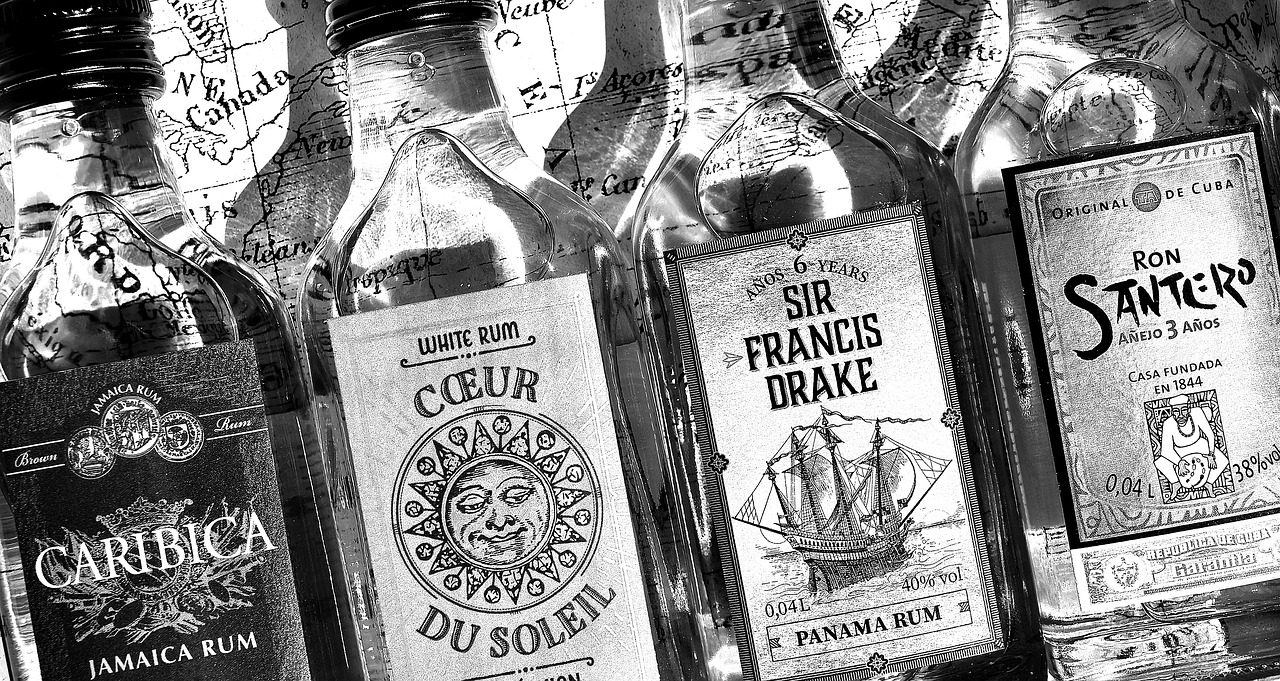Few spirits boast a history as rich and colourful as rum. Originating from the Caribbean, this versatile liquor has traveled through time and across continents, becoming a beloved ingredient in cocktails and a staple on the shelves of connoisseurs worldwide. Whether sipped neat, mixed into a mojito, or flambéed in a dessert, rum’s appeal lies in its diversity and the unique stories each bottle can tell.
The Beginnings of Rum: A Caribbean Legacy
Rum’s journey began in the sugarcane plantations of the Caribbean during the 17th century. Sugarcane, brought to the New World by Christopher Columbus, found a perfect home in the warm, tropical climate. The production of sugar left behind a byproduct called molasses, a thick, dark syrup. Ingenious plantation slaves discovered that fermenting and distilling molasses produced a potent spirit, which we now know as rum.
The popularity of rum spread rapidly. By the early 18th century, it had become a significant trade commodity, especially in colonial America. The infamous “triangle trade” saw rum shipped from New England to Africa, where it was traded for slaves, who were then transported to the Caribbean to work on sugarcane plantations. The molasses produced there would be shipped back to New England, completing the cycle. Despite its dark historical associations, rum evolved to become a symbol of celebration and camaraderie.
The Art of Rum Production
Rum’s production process is as varied as its history, contributing to the wide range of flavours and styles available. The primary ingredient, sugarcane, can be processed into either molasses or sugarcane juice. The latter is typically used in the production of rhum agricole, particularly in French-speaking Caribbean islands.
The fermentation process, influenced by the type of yeast used and the fermentation conditions, can impart distinct flavours. Distillation methods further define rum’s character, with pot stills producing heavier, more complex rums, and column stills yielding lighter, cleaner spirits.
Aging is where rum truly comes into its own. Unaged rums, often referred to as white rums, are typically used in cocktails. Aged rums, which can spend decades in oak barrels, develop deep, rich flavours of caramel, vanilla, and spice. The tropical climate accelerates the aging process, with rums maturing much faster than spirits aged in cooler climates.
Exploring Rum Styles
Rum’s diversity is one of its most exciting aspects. Each region and distillery brings its unique touch to the spirit, resulting in a variety of styles.
- Light Rums: These are usually clear and have a milder flavour, making them perfect for cocktails like the daiquiri or mojito.
- Gold Rums: Aged for a few years, these rums gain colour and flavour from their time in oak barrels. They strike a balance between the lightness of white rum and the depth of dark rum.
- Dark Rums: These rums are aged longer and often caramelised to enhance their deep colour and robust flavour profile. They are excellent for sipping or adding complexity to cocktails.
- Spiced Rums: Infused with spices like cinnamon, nutmeg, and vanilla, these rums offer a flavourful twist and are popular in mixed drinks.
- Premium Rums: Meant for sipping, these rums are carefully aged and crafted, showcasing the distiller’s art and the spirit’s complexity.
Rum in Cocktails and Cuisine
Rum’s versatility extends beyond the glass. In cocktails, it shines in classics like the piña colada, mai tai, and the ever-popular rum punch. Its rich flavours also make it a favourite in culinary applications, from rum-glazed ham to decadent rum-soaked cakes.
Conclusion
Whether you are a seasoned rum enthusiast or just beginning your exploration, rum offers a world of flavours and stories waiting to be discovered. From its storied past in the Caribbean to the innovative creations of places like Exmoor Distillery, rum continues to captivate and delight. So next time you raise a glass, take a moment to savour the rich heritage and diverse flavours that make rum truly special.
